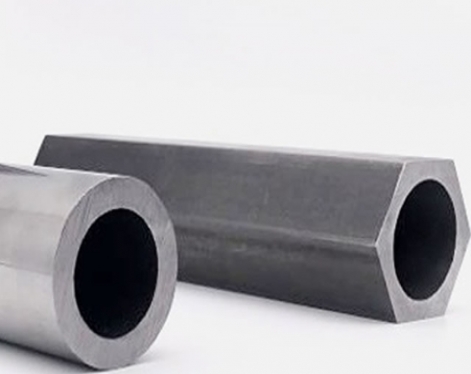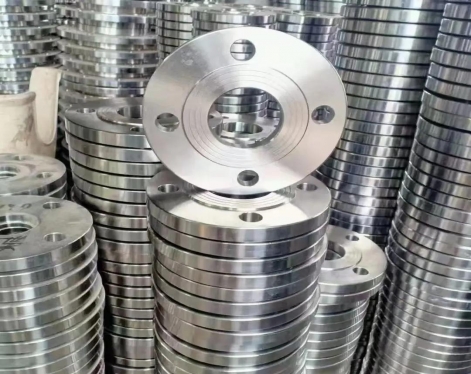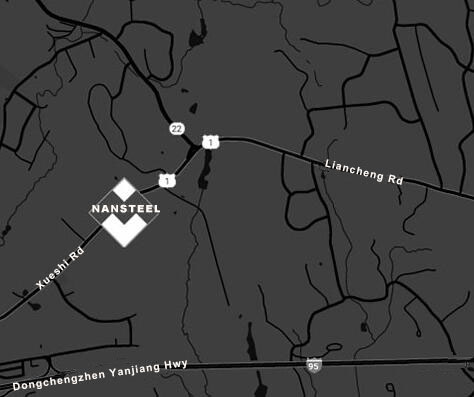Mechanical tubes refer to a type of special steel pipe used in machinery manufacturing, engineering equipment and industrial transmission systems. They are mainly in the form of seamless pipes or high-precision welded pipes, and focus on meeting functional requirements such as mechanical structure support, fluid transmission (such as hydraulic oil, lubricating oil), and power transmission.
Its core features are: high dimensional accuracy (outer diameter tolerance ≤±0.1mm), good surface finish (Ra≤1.6μm), mechanical properties adapted to working conditions (such as high strength and impact resistance), and often require subsequent processing (such as cutting, thread processing, and heat treatment).
Types of mechanical tubes
1. By material
Carbon steel mechanical tube: low cost, easy to process, suitable for general mechanical structures.
Alloy structural steel mechanical tube: high strength, good wear resistance, used for high pressure or heavy load parts.
Stainless steel mechanical tube: strong corrosion resistance, suitable for sanitary or corrosive environment.
2. By molding process
Seamless mechanical tube: no welds, excellent pressure resistance, used for high-pressure hydraulic systems and precision transmission parts.
Welded mechanical tube: high-precision welding forming, low cost, suitable for low-pressure structural support.
3. By use
Hydraulic mechanical tube: The inner wall is smooth, reducing the resistance of hydraulic oil, and is used for oil cylinders and hydraulic pipelines.
Structural mechanical tube: Focuses on load-bearing support, such as machine tool frames and mechanical arms.
Transmission mechanical tube: Transmits power, such as automobile drive shafts and motor sleeves.

Common mechanical tube size
Common mechanical tube size specifications mainly include two standards: metric and imperial. Metric is usually expressed in DN (nominal diameter), such as DN15 (4-inch pipe), DN20 (6-inch pipe), DN25 (1-inch pipe), etc. Imperial is usually expressed in inches, such as 1/2 inch, 3/4 inch, 1 inch, etc., which can be converted between them, for example, 1 inch pipe usually corresponds to DN25.
Metric (DN) size:
DN15: corresponds to 4-way pipe, usually used for household water supply and drainage.
DN20: corresponds to 6-way pipe, also commonly used for water supply and drainage.
DN25: corresponds to 1-inch pipe, commonly used for water supply and drainage with larger flow, as well as some industrial applications.
DN32: corresponds to 1-inch 2-way pipe.
DN40: corresponds to 1.5-inch pipe.
DN50: corresponds to 2-inch pipe.
DN65: corresponds to 2.5-inch pipe.
DN80: corresponds to 3-inch pipe.
DN100: corresponds to 4-inch pipe.
Imperial (inch) size:
1/2 inch: approximately DN15.
3/4 inch: approximately DN20.
1 inch: approximately DN25.
1-1/4 inch: approximately DN32.
1-1/2 inch: approximately DN40.
2 inch: approximately DN50.
2-1/2 inch: approximately DN65.
3 inch: approximately DN80.
4 inch: approximately DN100.
The Importance of mechanical tube size
1. Ensure efficient operation of the system
Mechanical tubes with precise dimensions can reduce fluid transmission resistance, especially in hydraulic systems. Excessive inner diameter deviation will lead to pressure loss, unstable flow, and affect the response speed of the equipment; insufficient outer diameter matching may cause seal failure and reduce transmission efficiency.
2. Ensure safe structural fit
In mechanical structures, pipe diameter and wall thickness determine load-bearing and anti-deformation capabilities. Dimension mismatches can lead to excessive or tight assembly clearances, causing vibration, increased wear, and even breakage. For example, when the dimensional matching error between the piston rod and the cylinder exceeds the limit, it will directly affect the operating accuracy of the construction machinery.
3. Control costs and maintenance costs
Oversizing may lead to material waste (such as excessive wall thickness increases weight and cost), or frequent replacement due to insufficient strength; while undersizing may not meet flow requirements, forcing the system to upgrade and indirectly increase investment. Accurate size can achieve optimal material utilization and reduce the frequency of subsequent maintenance.
Read more: How to Extend the Service Life of Mechanical Tubes?
Its core features are: high dimensional accuracy (outer diameter tolerance ≤±0.1mm), good surface finish (Ra≤1.6μm), mechanical properties adapted to working conditions (such as high strength and impact resistance), and often require subsequent processing (such as cutting, thread processing, and heat treatment).
Types of mechanical tubes
1. By material
Carbon steel mechanical tube: low cost, easy to process, suitable for general mechanical structures.
Alloy structural steel mechanical tube: high strength, good wear resistance, used for high pressure or heavy load parts.
Stainless steel mechanical tube: strong corrosion resistance, suitable for sanitary or corrosive environment.
2. By molding process
Seamless mechanical tube: no welds, excellent pressure resistance, used for high-pressure hydraulic systems and precision transmission parts.
Welded mechanical tube: high-precision welding forming, low cost, suitable for low-pressure structural support.
3. By use
Hydraulic mechanical tube: The inner wall is smooth, reducing the resistance of hydraulic oil, and is used for oil cylinders and hydraulic pipelines.
Structural mechanical tube: Focuses on load-bearing support, such as machine tool frames and mechanical arms.
Transmission mechanical tube: Transmits power, such as automobile drive shafts and motor sleeves.

Common mechanical tube size
Common mechanical tube size specifications mainly include two standards: metric and imperial. Metric is usually expressed in DN (nominal diameter), such as DN15 (4-inch pipe), DN20 (6-inch pipe), DN25 (1-inch pipe), etc. Imperial is usually expressed in inches, such as 1/2 inch, 3/4 inch, 1 inch, etc., which can be converted between them, for example, 1 inch pipe usually corresponds to DN25.
Metric (DN) size:
DN15: corresponds to 4-way pipe, usually used for household water supply and drainage.
DN20: corresponds to 6-way pipe, also commonly used for water supply and drainage.
DN25: corresponds to 1-inch pipe, commonly used for water supply and drainage with larger flow, as well as some industrial applications.
DN32: corresponds to 1-inch 2-way pipe.
DN40: corresponds to 1.5-inch pipe.
DN50: corresponds to 2-inch pipe.
DN65: corresponds to 2.5-inch pipe.
DN80: corresponds to 3-inch pipe.
DN100: corresponds to 4-inch pipe.
Imperial (inch) size:
1/2 inch: approximately DN15.
3/4 inch: approximately DN20.
1 inch: approximately DN25.
1-1/4 inch: approximately DN32.
1-1/2 inch: approximately DN40.
2 inch: approximately DN50.
2-1/2 inch: approximately DN65.
3 inch: approximately DN80.
4 inch: approximately DN100.
The Importance of mechanical tube size
1. Ensure efficient operation of the system
Mechanical tubes with precise dimensions can reduce fluid transmission resistance, especially in hydraulic systems. Excessive inner diameter deviation will lead to pressure loss, unstable flow, and affect the response speed of the equipment; insufficient outer diameter matching may cause seal failure and reduce transmission efficiency.
2. Ensure safe structural fit
In mechanical structures, pipe diameter and wall thickness determine load-bearing and anti-deformation capabilities. Dimension mismatches can lead to excessive or tight assembly clearances, causing vibration, increased wear, and even breakage. For example, when the dimensional matching error between the piston rod and the cylinder exceeds the limit, it will directly affect the operating accuracy of the construction machinery.
3. Control costs and maintenance costs
Oversizing may lead to material waste (such as excessive wall thickness increases weight and cost), or frequent replacement due to insufficient strength; while undersizing may not meet flow requirements, forcing the system to upgrade and indirectly increase investment. Accurate size can achieve optimal material utilization and reduce the frequency of subsequent maintenance.
4. Ensure the feasibility of subsequent processing
Mechanical tubes often require secondary processing such as cutting, welding, and thread processing. Excessive dimensional tolerance will lead to an increase in the scrap rate of processing. For example, if the outer diameter deviation of the tube used for the spindle of a precision machine tool exceeds ±0.05mm, it may not meet the assembly accuracy requirements.Read more: How to Extend the Service Life of Mechanical Tubes?









